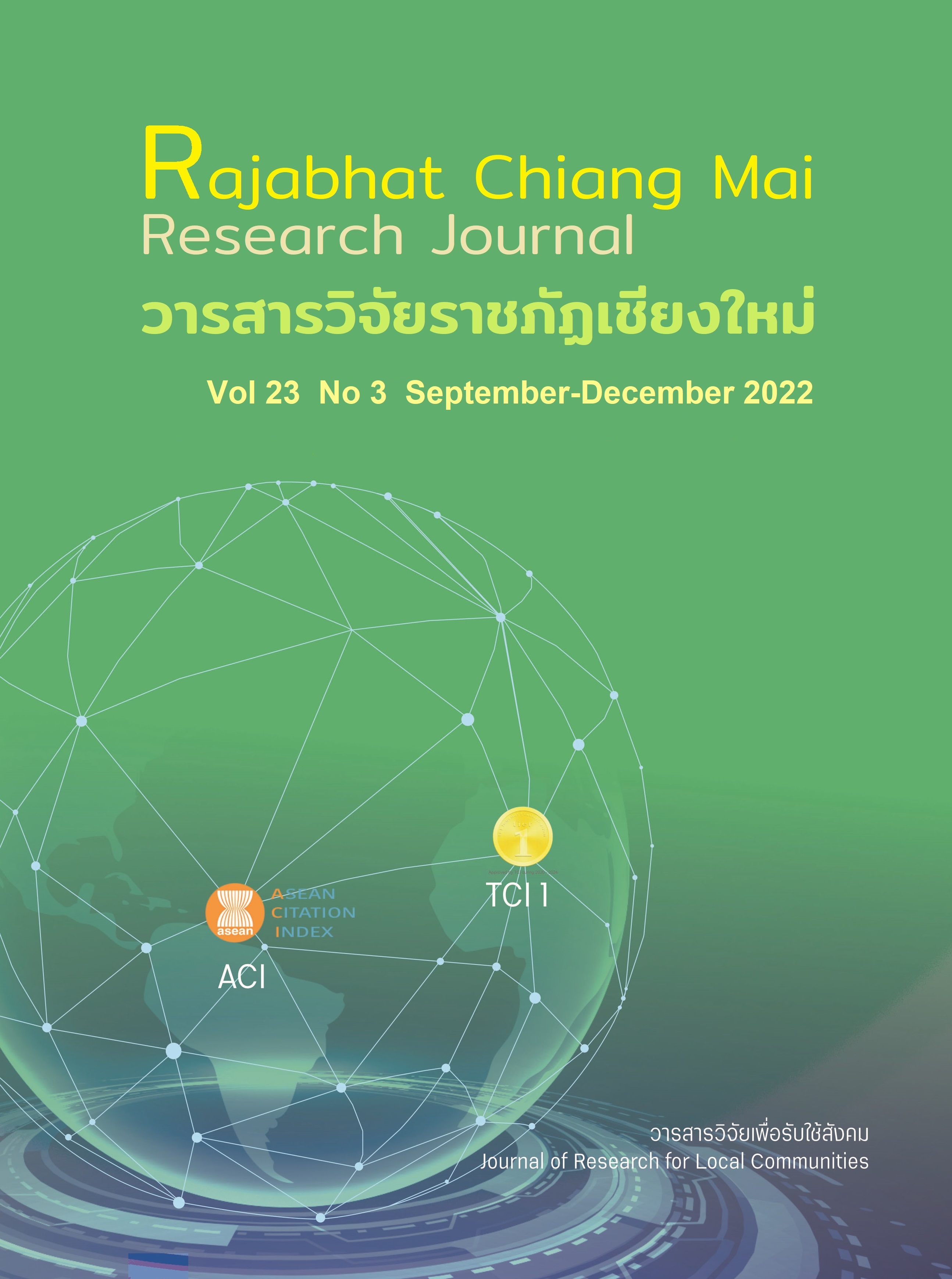Confirmatory Factor Analysis of Intrapreneurship in Automatic Identification Technology for Technology Disruption in Thailand
DOI:
https://doi.org/10.57260/rcmrj.2022.262053Keywords:
Confirmatory factor analysis, IntrapreneurshipAbstract
The purpose of this research study was to analyze and examine the confirmatory factors in intrapreneurship of automatic identification technology suitable to cope with technology disruption in Thailand. The conceptual framework of the study, derived from the review of related literature, revealed the main factors in the aspects of human resources development and teamwork, leadership and followership, organizational culture, and learning organization. The sample group for the study comprised 420 representatives, including executive staff members in the position of department managers and professional-level employees selected by multiple-stage sampling method. The tool for data collection was a 5-level rating scale questionnaire with the IOC between 0.80-1.00, and SPSS Amos was used for the confirmatory factor analysis.
The results of the confirmatory factor analysis asserted that the measurement model of human resources development and teamwork, leadership and followership, learning organization, and organizational culture, respectively, which were all consistent with the empirical data. The fit indices analysis results showed χ2 = 131.80, df = 125, P-value = 0.335, AGFI = 0.947, NFI = 0.980, IFI = 0.999, RMSEA = 0.011, SRMR = 0.009, CFI = 0.999, χ2 / df = 1.049.
Based on the results of the research study, the factors examined can be used as a guideline for developing the intrapreneurship of employees in automatic identification technology businesses to embrace the changes and advance the organization to cope with the competitiveness in the future, as well as to come up with creative problem solutions in an effective fashion.
Downloads
References
Chaisena, C., Rodwond, C., & Taminmoei, R. (2017). Transformational Leadership Organizational of Culture Of the Chief Executive of the Singburi Provincial Administrative Organization. Dhonburi Rajabhat University Journal, 11(1), 46-59. https://o-journal.dru.ac.th// download.php?type=abs&id=383&file=2017_06_14_132057.pdf (In Thai)
Cochran, W.G. (1953). Sampling Techniques. New York: John Wiley & Sons. Inc.
Diamantopoulos, A. & Siguaw, J.A. .(2000). Introduction to LISREL: A guide for the uninitiated. London: SAGE Publications, Inc.
Fisher, G., Stevenson, R., Neubert, E., Burnell, D., & Kuratko, D.F. (2020). Entrepreneurial Hustle: Navigating uncertainty and enrolling venture stakeholders through urgent and unorthodox action. Journal of Management Studies, 57 (5), 1002-1036. https://doi.org/10.1111/joms.12584
Hair, J. F. J., Anderson, R. E. , Black, W. C., Babin, B. J ., & Tatham, R. L., (2006). Multivariate Data Analysis. (6th ed.). Upper Saddle River, New Jersey, Prentice Hall.
Haynes, K.T., Hitt, M.A., & Campbell, J.T. (2015). The dark side of leadership: Towards a mid‐ range theory of hubris and greed in entrepreneurial contexts. Journal of Management Studies, 52(4), 479-505. DOI:10.1111/joms.12127
Kovintavewat, P. (2008). Knowledge of Auto-ID. Retrieved from http://home.npru.ac.th/piya/RFID/file/Piya_Ch1.pdf (In Thai)
Kulkalyuenyong, P.(2018). Strategies in Building Corporate Enterpreneurship. Journal of Humanities and Social Sciences, Rajapruk University, 4(1), 1-11. https://so03.tci-thaijo.org/index.php/rpu/article/view/124673/94508 (In Thai)
May, T. (1997). Social Research: Issue, Methods Process. Open University Press, Buckingham.
Moorman, C. & Miner, A. (1998). Organizational improvisation and organizational memory. Academy of Management Review, 23(4), 698-723. https://doi.org/10.2307/259058
Prakobtham, B. (2011). Creative Business Media by QR Code. Executive Journal, 30(4), 41-47. https://www.bu.ac.th/knowledgecenter/executive_journal/oct_dec_10/pdf/aw5.pdf (In Thai)
Singchangchai, P. ( 2021) . Second-Oder Confirmatory Factor Analysis of an Innovative work Behavior for First-line Nurse Managers in Private Hospitals. Journal of Vongchavalitkul University, 34(2), 44-55. https://ph01.tci-thaijo.org/index.php/vujournal/article/view/247262/168035 (In Thai)
Downloads
Published
How to Cite
Issue
Section
License
Copyright (c) 2022 Rajabhat Chiang Mai Research Journal

This work is licensed under a Creative Commons Attribution-NonCommercial-NoDerivatives 4.0 International License.
1. Articles, information, content, images, etc published in the “Community and Social Development Journal” are copyrighted by the Community and Social Development Journal, Chiang Mai Rajabhat University. In order to properly distribute the articles through print and electronic media, the authors still hold the copyright for the published articles under the Creative Commons Attribution (CC BY) license, which allows the re-distribution of the articles in other sources. References must be made to the articles in the journal. The authors are responsible for requesting permission to reproduce copyrighted content from other sources.
2. The content of the articles appearing in the journal is the direct responsibility of the article authors. The editorial board of the journal does not necessarily agree with or share any responsibility.














